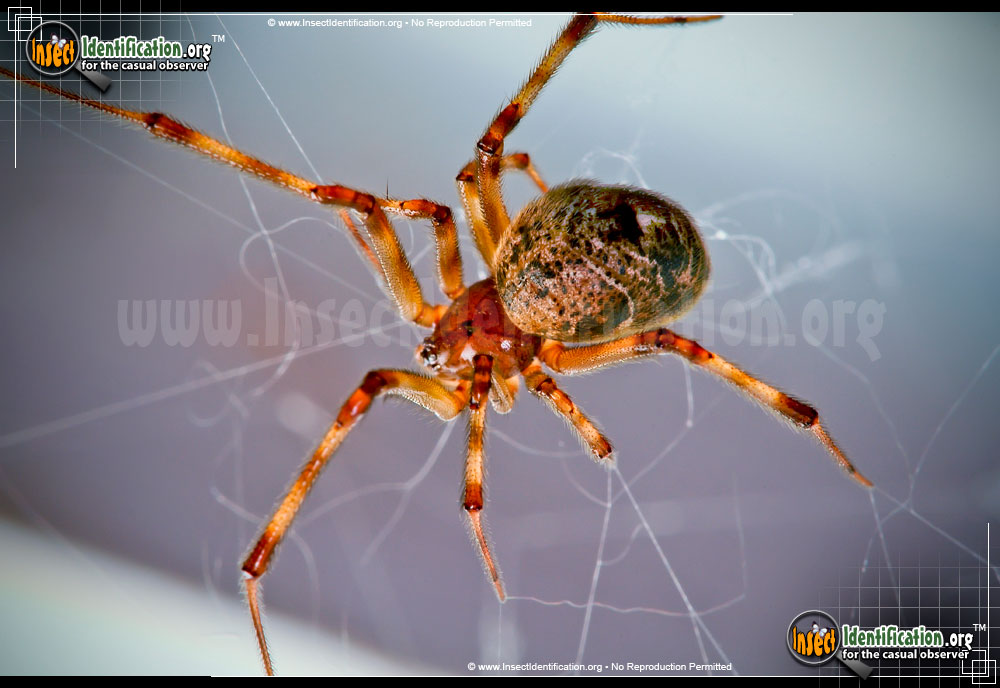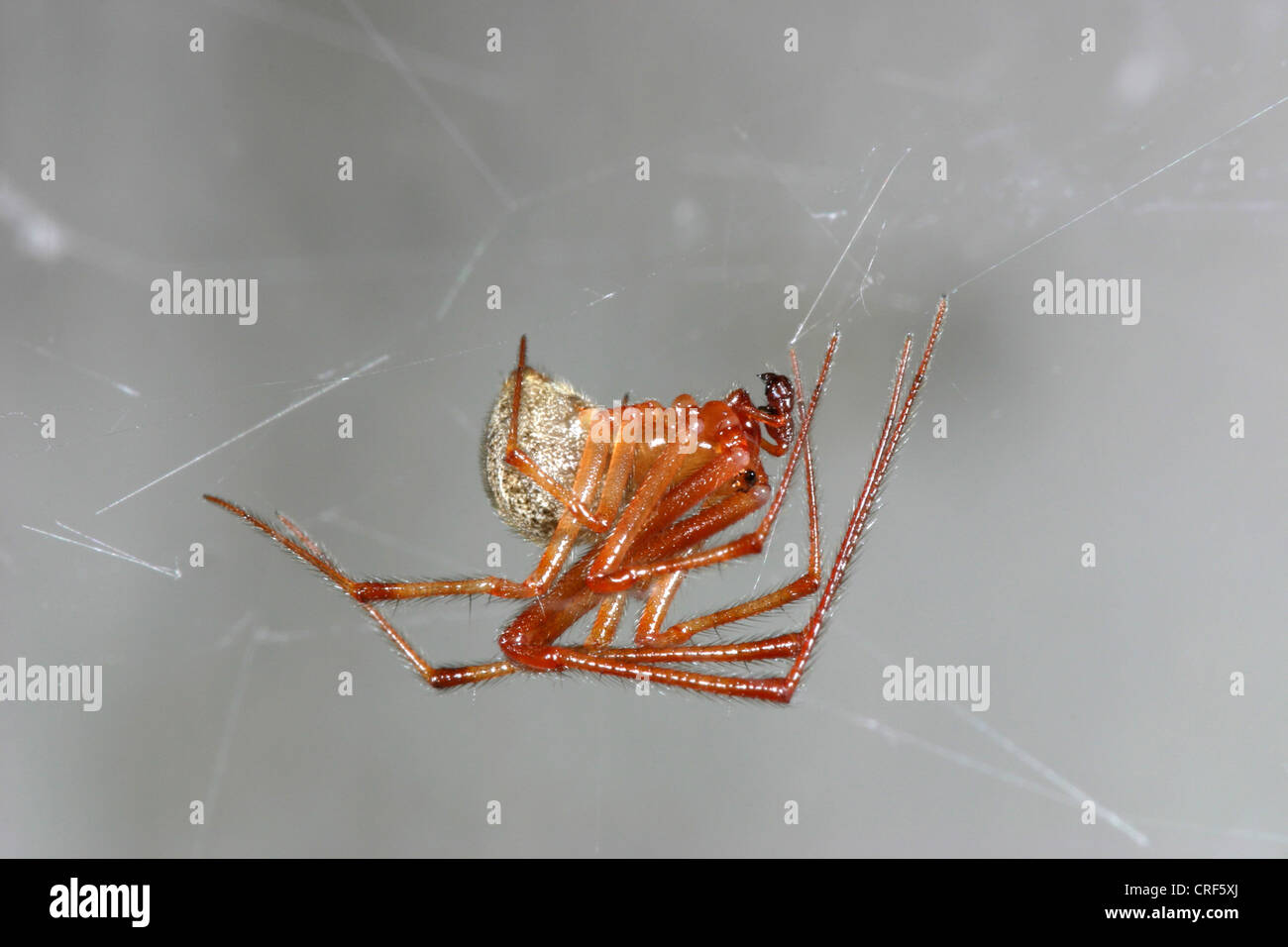Table Of Content

They rarely bite people, and even when they do, most species' venom causes only moderate and short-lived effects. That's true for the vast majority of house spiders, which have no incentive to bite anything they can't eat unless they think it's a matter of life or death. House spiders typically colonize new buildings via eggs sacs attached to furniture or building materials, but sometimes outdoor spiders also wander inside.

In Fact, House Spiders Can Be Helpful
Seeing a black or brown arachnid scampering across the floor or lurking in a dark corner can send you into a panic. There is also the fear that the house spider is dangerous and could inflict a nasty bite. One of the most abundant house spiders is Parasteatoda tepidariorum, aka American house spider, which is native to North America but now found around the world. Measuring 4 to 8 millimeters long, these yellowish-brown spiders have a tall, round abdomen and two rows of four eyes.
Can Common House Spiders Bite?
There are thousands of species of jumping spiders with common characteristics. The small, white-spotted spiders measure 0.04” to 1” (1 – 25 mm) long. Also called crevice weaver spiders, the brown spiders thrive in warm environments. This article is a guide to identifying common types of spiders you are likely to find in your home. Descriptions and pictures of the eight-legged creepy crawlers will help you know the spider species and how to deal with them.

Eggs
Cellar spiders are common in houses throughout North America and are completely harmless. However, you may notice the small spider with its thin arching legs in the corner of rooms. These spiders spin messy, irregular-shaped webs high up in corners of rooms and other undisturbed places. Males and females can be found at any time of year, and there are reports of the spiders living for a year or more after maturing. The egg sacs are brown and ovoid with tough, papery covers and can be 6 to 9 millimeters in diameter. A female may deposit twelve or more egg sacs over her lifetime, each containing 140 to 380 eggs.
How To Get Rid Of Brown Recluse Spiders Humanely - Forbes
How To Get Rid Of Brown Recluse Spiders Humanely.
Posted: Thu, 07 Mar 2024 08:00:00 GMT [source]
Although this small brown spider only measures 0.08” to 0.39” (2 – 10 mm), it has an enormous leg span of 2” (50 mm). In addition, the small spider has six eyes arranged in groups of three. A black widow is most likely to bite after laying eggs and guarding their egg sacs, but only when disturbed. Widow spiders range in color, as there are both brown and black widows, but both have a distinct reddish-orange hourglass shape on the underside of their abdomen.
Common House (Parasteatoda tepidariorum)
Various myths suggest house spiders are repelled by osage orange, horse chestnuts, or even copper pennies, but Crawford is doubtful. "Spiders feed on common indoor pests, such as roaches, earwigs, mosquitoes, flies and clothes moths," explains a fact sheet by Bayer CropScience. Sac spiders vary drastically in coloring and are sometimes confused with other spiders due to shades ranging from yellow to brown to green. It's a good idea to keep your distance from these spiders, as their venom contains cytotoxin and has been shown to be toxic to humans.
In homes, it is most often encountered in damp areas such as basements and crawl spaces. Because this spider frequently abandons its web to build a new one nearby, it can produce many webs in a short period of time. Another widespread species is Tegenaria domestica, aka domestic house spider, which is native to Europe but has also become cosmopolitan with human help. It first appeared at U.S. shipping ports in the 1600s, and is now found across most of North America as well as Europe and western Asia.
Orb weaver spiders are a type of outdoor spider that can hide in structures like the patio and decking around your home. The large hairy spiders typically have a furry brown, oval abdomen with black or white spots, spiny legs, and a relatively small head. Wolf spiders are furry brown spiders with distinctive black bands on their abdomens. Identifying features of wolf spiders are their eight eyes arranged in three rows, banded furry legs, and a flattened head. The medium-sized brown spiders grow 0.4” to 1.4” (10 – 35 mm) in size. A brown recluse spider has a yellowish-brown velvety head and oval abdomen.
Many of these are spiders that eschew webs in favor of active hunting, like wolf spiders, and may be seen scampering across floors or walls. If you release one of these outside, you might actually be doing it a favor. Widow spiders are not one of the most common types of house spiders, but are the species most people worry about. If you see a spider in your home, it is likely not a widow spider, but it's still a good idea to know what to look for and how to avoid disrupting them. “This is one of the few species of spider that can be dangerous to people,” says Potzler.
Please continue reading to learn more about common indoor house spiders. Steatoda grossa, aka cupboard spider, has similarly expanded far beyond its native Europe, including North America and Australasia. Varying in length from 4 to 11 millimeters, this spider is known for messy webs that contribute to indoor cobweb buildup. It's also one of several Steatoda species known as a "false black widow" because people commonly confuse it with that highly venomous spider. Not only does it lack the black widow's red hourglass, however, but its bite is more like a bee sting. Read on to learn more about some of the most common house spiders, including which are harmless or potentially dangerous and what they look like.
If you still can't stand house spiders, it is possible to keep them in check without losing your cool. Instead of resorting to pesticides, smashing, or other potentially lethal methods (like a vacuum cleaner), try to stay ahead of population booms by limiting suitable habitats. Check windows, eaves, and other popular spider hangouts, and remove any cobwebs you find. This probably won't eliminate your house spiders, but it might drive them to lower-profile haunts like a shed, garage, or crawlspace. To complicate matters further, house spiders come in lots of shapes and sizes.
The types in your house depend largely on where you live, although humans have helped many species spread around the planet, especially those from Europe. Reactions vary from person to person, but hobo spiders are not considered toxic to humans, according to the University of California's Pest Management Program. Spiders do not react as strongly to chemical treatments as insects unless they come into direct contact with the spray.
Hobo spiders are common in houses in the northwestern United States. They enter homes through cracks in the fall and will find dark, damp places to hide. They are often found in basements, under bathtubs, or in wall crevices. The brown recluse spins disorderly webs and inhabits dark, quiet places in homes, typically where there is cardboard.
The black house spider is identified by its dark gray to black oval abdomen covered in tiny white markings. Also, the spider has a huge leg span of 1.1” (28 mm), making it appear larger. Identifying features of the common American house spider are its bulbous dark brown body with mottled patterns, long creamy-white and tan legs, and a small, brown-colored head. Identification of brown spiders can be difficult because they all have very similar markings and colorings.

No comments:
Post a Comment